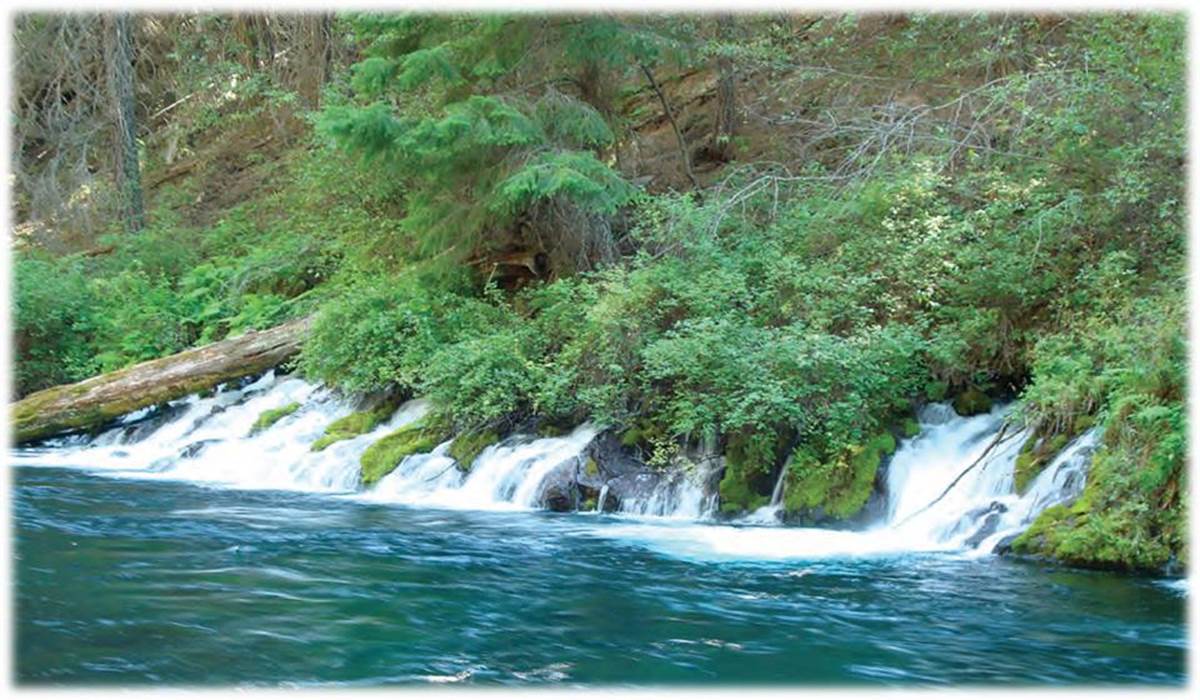
Groundwater occurs almost everywhere beneath the land surface. However, the ability of rock and sediment to accept recharge and transmit groundwater varies greatly throughout the state based on hydrogeological characteristics.
Oregon’s most productive regional aquifer systems occur in the Willamette Valley, High Cascades, and Deschutes-Columbia geologic provinces. However, productive local aquifers exist throughout the state and most geologic formations or rock types in Oregon are capable of producing at least small quantities of potable water suitable for domestic use.
Recharge to groundwater occurs from many sources, including rainfall, snowmelt, irrigation and other artificial systems. Water that has infiltrated to the groundwater system flows along subsurface pathways under the forces of gravity and pressure, and ultimately exits the groundwater system through discharge to surface water bodies (see accompanying picture), vegetation uptake, and appropriation through wells. Movement of groundwater is relatively slow (feet or less per year, as opposed to feet per second as surface water flow is commonly measured) and its residence time underground varies from days to millennia.